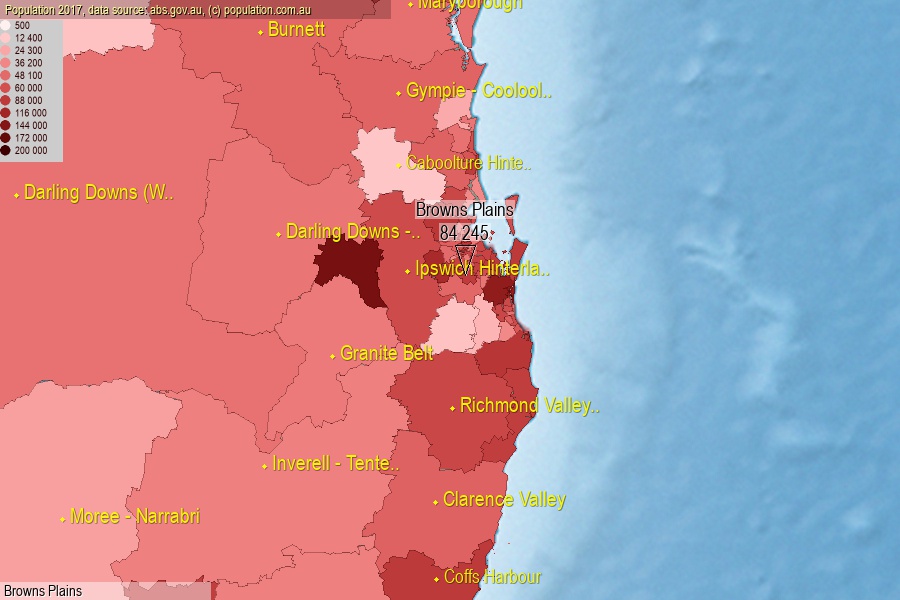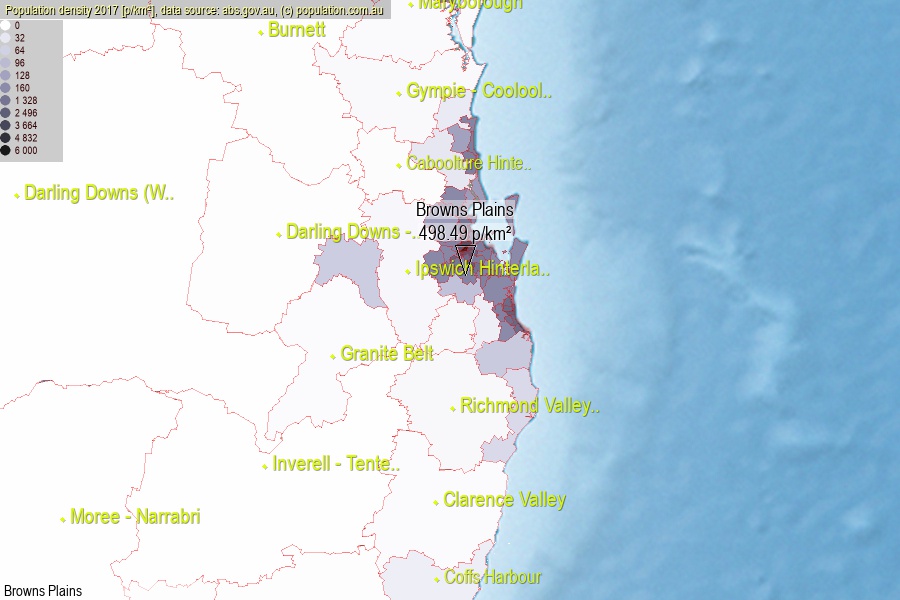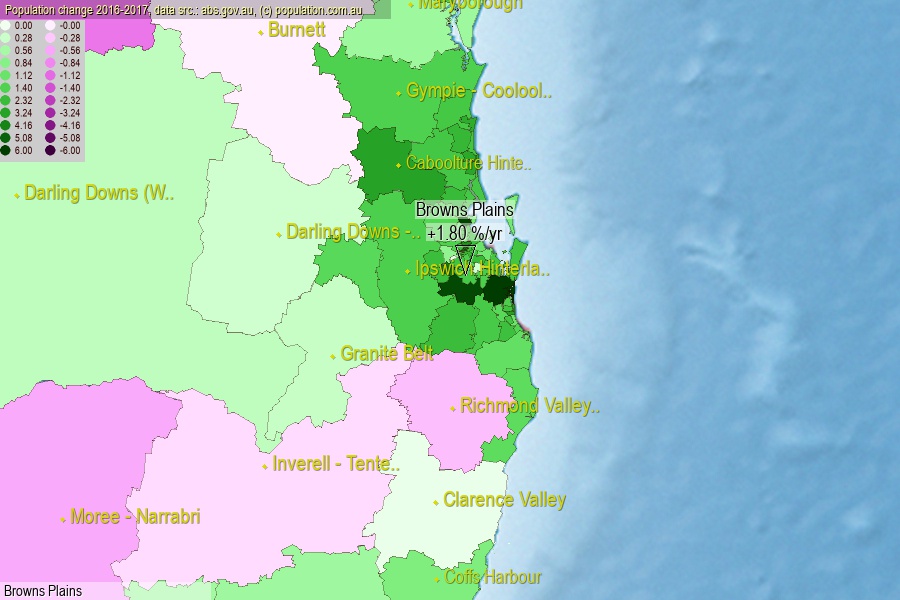 population.com.au
population.com.auLast official estimated population of Browns Plains (as Statistical Area Level 3) was 84 245 people (on 2017-06-30)[2]. This was 0.34% of total Australian population and 1.688% of QLD population. Area of Browns Plains is 169.00 km², in this year population density was 498.49 p/km² . If population growth rate would be same as in period 2016-2017 (+1.8%/yr), Browns Plains population in 2025 would be 97 182. [0]



Click to enlarge. Browns Plains is located in the center of the images.
Population [people], population density [p./km²] and population change [%/year] [2]
View borders » (new window) [4]
[1991-1992] +6.97 %/Y
[1992-1993] +6.60 %/Y
[1993-1994] +5.98 %/Y
[1994-1995] +5.74 %/Y
[1995-1996] +3.12 %/Y
[1996-1997] +1.97 %/Y
[1997-1998] +0.65 %/Y
[1998-1999] +1.02 %/Y
[1999-2000] +1.74 %/Y
[2000-2001] +1.77 %/Y
[2001-2002] +1.72 %/Y
[2002-2003] +1.83 %/Y
[2003-2004] +1.88 %/Y
[2004-2005] +1.32 %/Y
[2005-2006] +2.82 %/Y
[2006-2007] +2.64 %/Y
[2007-2008] +2.59 %/Y
[2008-2009] +2.44 %/Y
[2009-2010] +1.36 %/Y
[2010-2011] +1.78 %/Y
[2011-2012] +2.72 %/Y
[2012-2013] +2.33 %/Y
[2013-2014] +1.67 %/Y
[2014-2015] +1.39 %/Y
[2015-2016] +1.66 %/Y
[2016-2017] +1.80 %/Y
[0] Calculated with linear interpolation from officially estimated population
[1] Read more about SA3 and Australian Statistical Geography Standard (ASGS) on abs.gov.au
[2] Population data from Australian Bureau of Statistics (Population and density: 2017; change: 2016-2017)
[3] Digital Boundaries: Australian Statistical Geography Standard (ASGS) 2016.
[4] Border coordinates are simplifyed using Ramer-Douglas-Peucker algorithm.